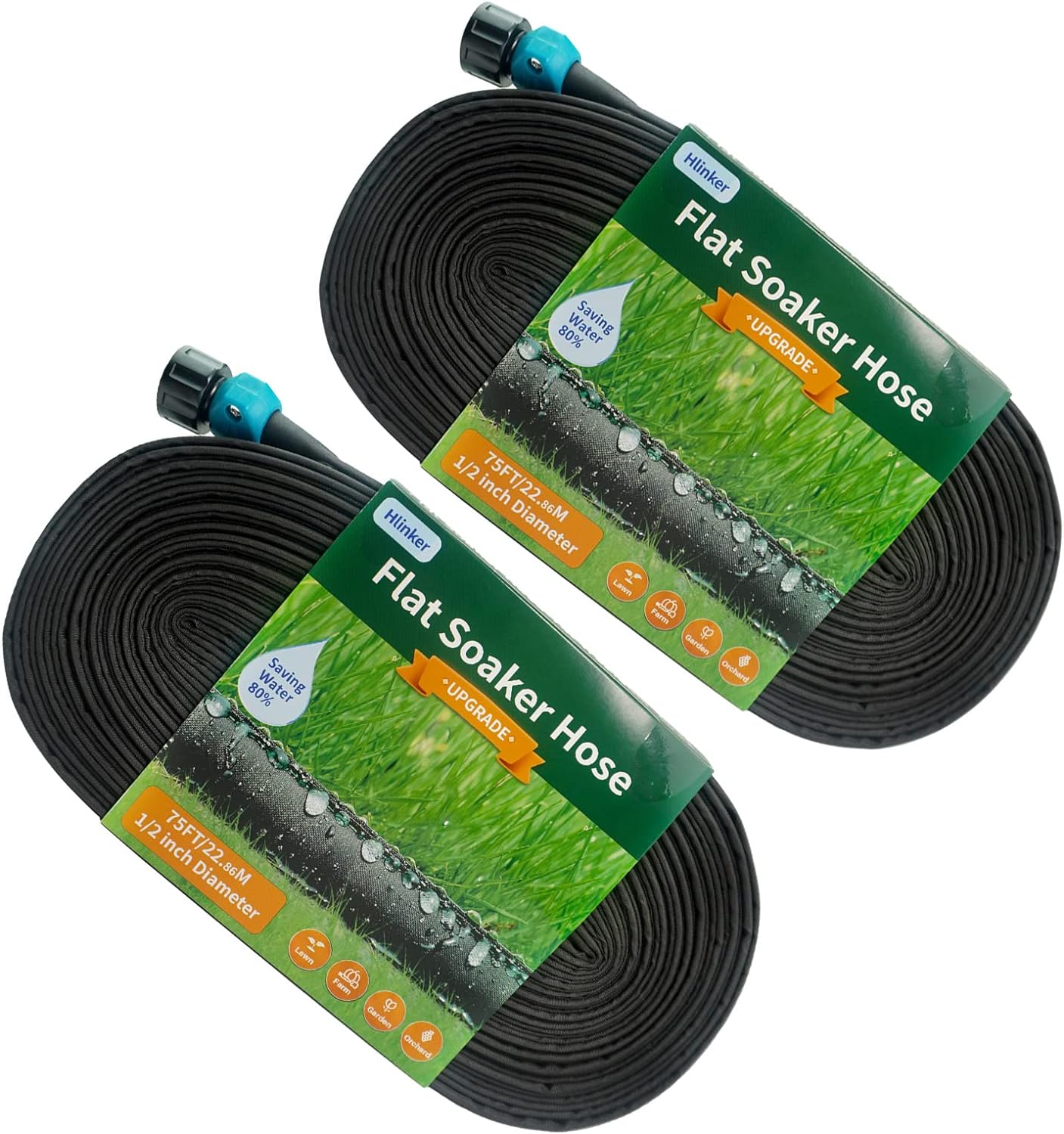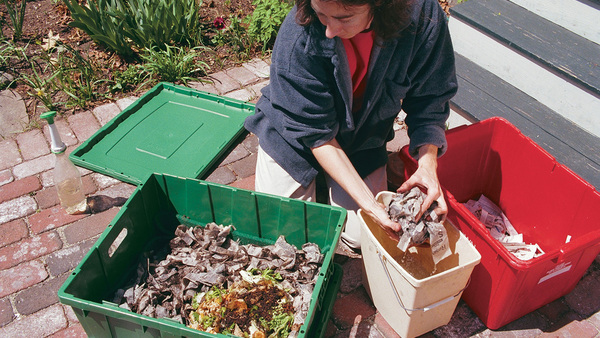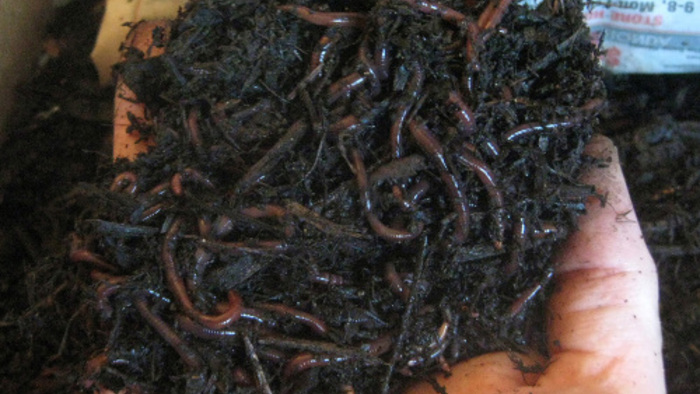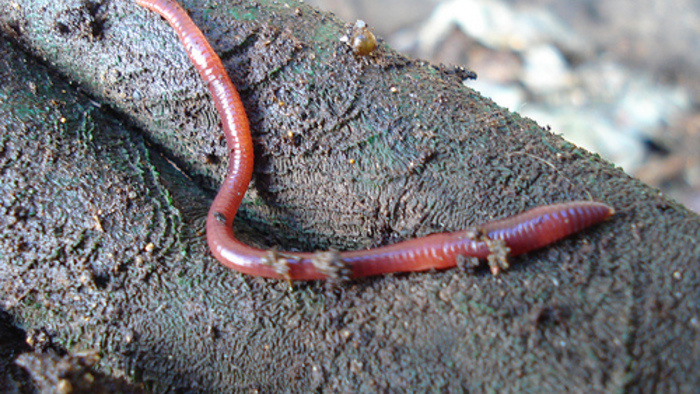
Are you longing to join the growing group of urban farmers, but you live in a small space instead of the wide open spaces? Looking for a way to turn kitchen waste into a rich soil amendment, but there’s no room for a compost pile?
A simple solution to both dilemmas is to start your own worm farm.
It’s easy and inexpensive to build a homemade worm farm and it can reap benefits for the garden. Worms produce rich compost that can enrich garden soil or brew into a compost tea.
You can get started on your worm farm by purchasing stackable worm composting systems or you can build your own out of two plastic totes, like the one created by my friend Todd Neff.
For this project, you’ll need the following:
Supplies
- Electric drill with 1/4″ and 1/16″ bits
- Two 8-10-gallon non-transparent plastic bins (found at a discount store, superstore, or dollar store)
- Two bricks
- Newspaper
- A large piece of cardboard
- One pound of worms
Instructions
- Drill 20-30 worm-sized holes (1/4 inch in size) evenly spaced in the bottom of both bins.
- Drill ventilation holes (about 1/16 inch) around the top rims of both totes, about 1 ½ inches apart.
- Drill another set of holes (about 1/16 inch) evenly spaced in the top of one lid. No holes are drilled in the second lid.
- Tear a section of newspaper into 1-inch strips.
- Soak the newspaper in water then squeeze out the excess water so the paper is damp-moist.
- Place the lid without holes on the ground with the edge side up to catch any liquid that might drain from the bin; place the 2 bricks on it.
- Place one of the drilled totes on the bricks.
- Add a 4-inch layer of separated newspaper strips as bedding in the bottom of the tote and sprinkle in a handful of garden soil.
- Add worms (purchased online or where fishing bait is sold) to the bedding.
- Cut the cardboard to fit over the bedding and use a spray bottle to get the cardboard wet.
The worms will eat about 2-3 pounds of kitchen scraps a week. Feed slowly at first with coffee grounds, egg shells, fruits and vegetables past their prime, cereal, grains, etc. Avoid dairy products, meat, oil and fats.
When you add scraps, lift the ventilated lid and cardboard, and place scraps in a different part of the bin each time. Bury them in about 1″ of moist newspaper.
- When the first bin is full and all of the scraps are eaten, add new newspaper scraps to the second bin.
- Place the bin directly on the surface of the full bin.
- Add scraps to the bedding; the worms will eventually move from the full bin to the empty bin.
- The first bin is now full of a rich vermicompost to use for amending soil in the garden.
- Repeat the process of feeding and adding moist bedding.
Place the farm in a well-ventilated area or outside in a shady spot. The keys to a successful worm farm are giving your worms enough moist bedding, keeping the bins well ventilated and feeding them a vegetarian diet.
Fine Gardening Recommended Products

Fort Vee - Organic Potting Soil Mix
Fine Gardening receives a commission for items purchased through links on this site, including Amazon Associates and other affiliate advertising programs.

Flat Soaker Hose 75 150 FT for Garden Beds
Fine Gardening receives a commission for items purchased through links on this site, including Amazon Associates and other affiliate advertising programs.




















Comments
Log in or create an account to post a comment.
Sign up Log in